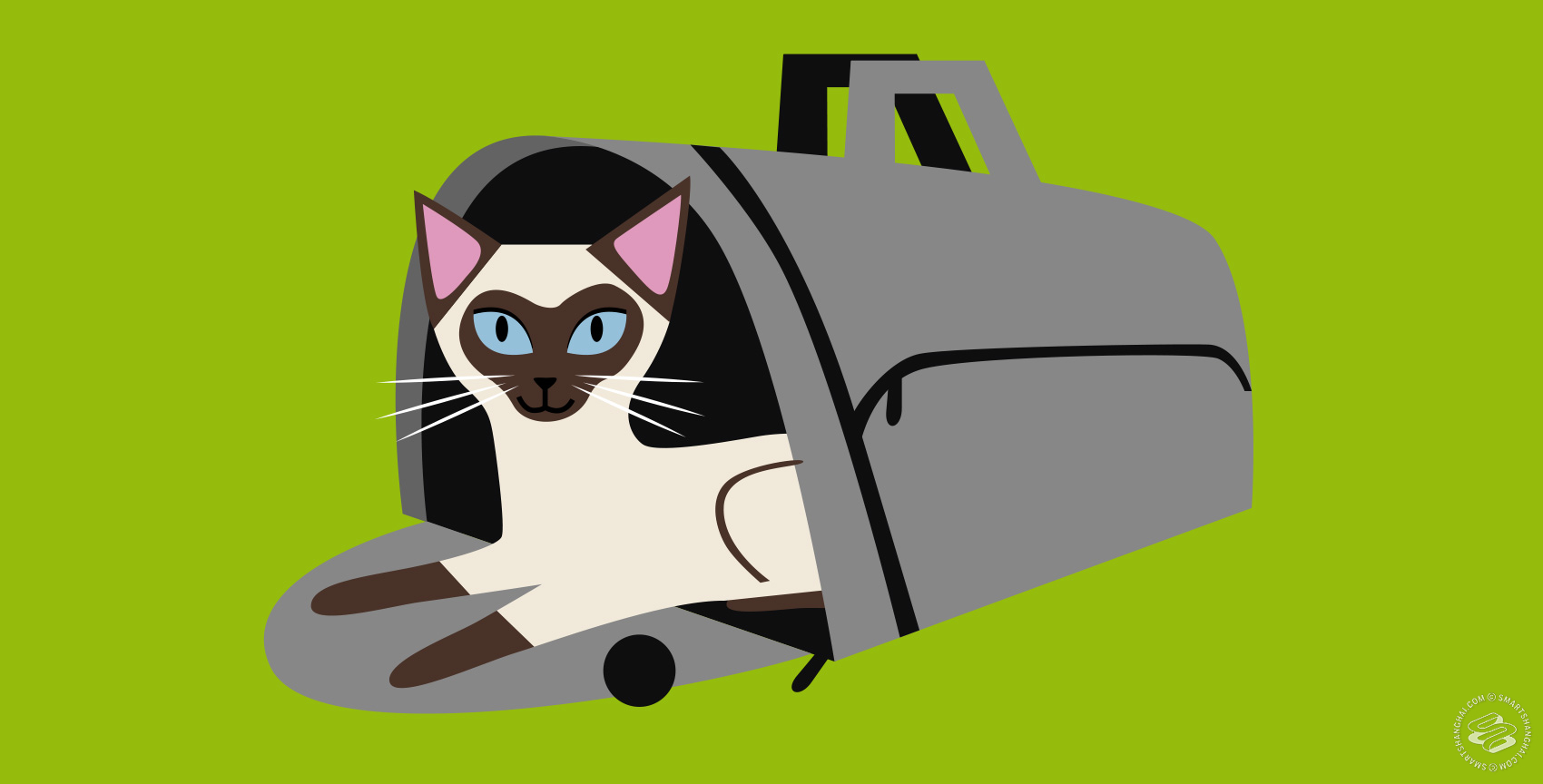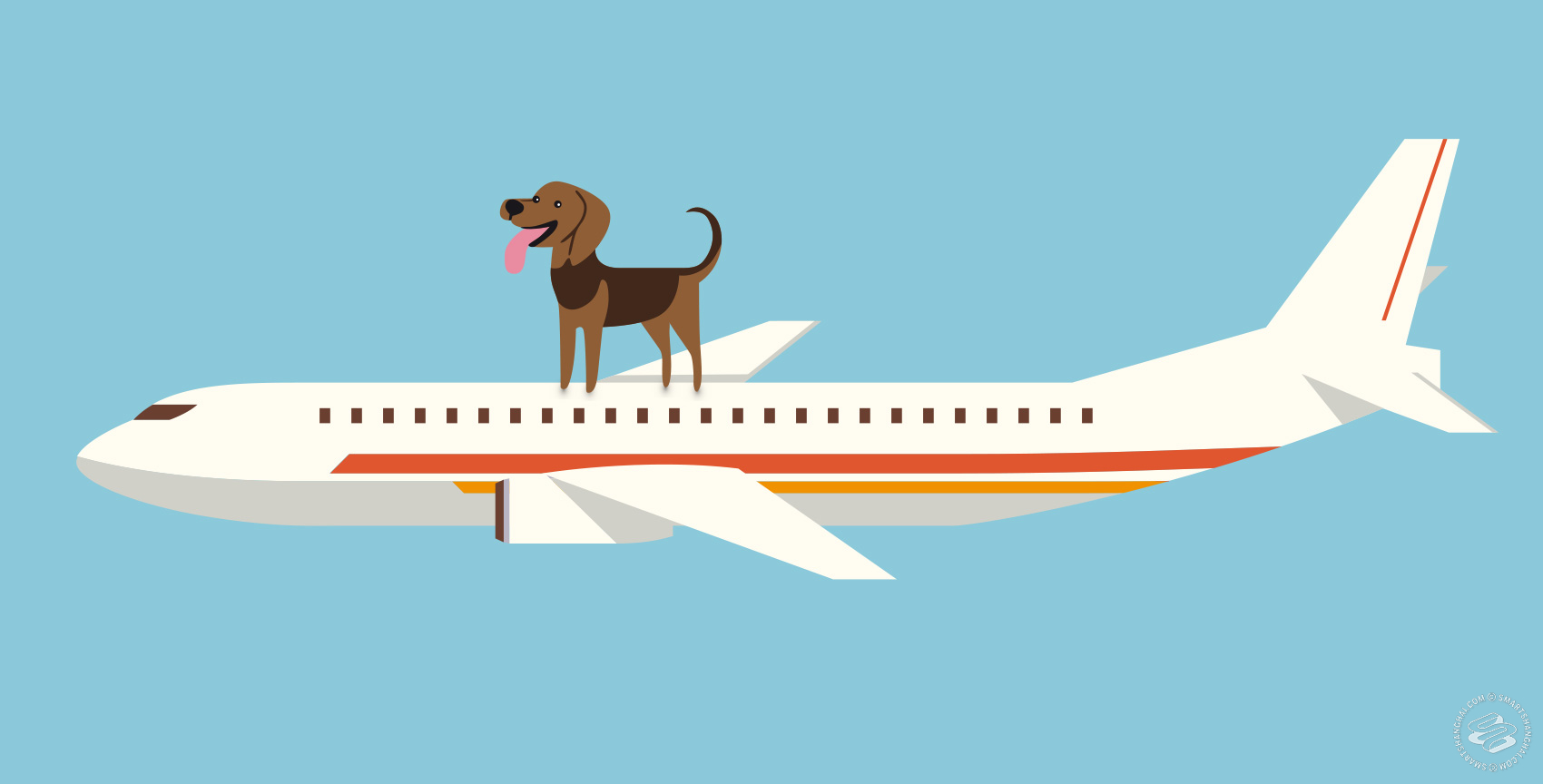This article originally appeared in 2015. It was updated and re-written in February 2020.
Time’s up! You’ve had your year or decade or lifetime in China and now it’s time to go somewhere else. But along the way, you’ve picked up a little friend and you want Squirt or Pepper or Wooks to go with you to your next stop. (Assuming Squirt, Pepper or Wooks are cats or dogs. Rabbits, hamsters and chinchillas may qualify for special export permits, but these are new and it’s not possible to DIY. Find a transport agent to help you out.)
So, how do you get your pet out of China?
Keep in mind this is actually a two-part question: how do you get your pet OUT of China; and how do you get your pet INTO your end destination?
This article only deals with the first part — getting your pet out of China. To answer the second half of the question, you’ll need to research the specific requirements of the country or region you’ll be traveling to.
To break down the advice into easy steps and confirm the process for 2020, we spoke with Lee-Anne Armstrong, the Executive Director for Second Chance Animal Aid Shanghai, which maintains a helpful webpage with much of this information.
"There is no way to expedite pet export - import. The current situation with the new coronavirus impacting flights is also having a big impact on pet transport.
At this time, the weather is not affecting transport of pets from Shanghai on Chinese airlines, however airline policies on pets are rapidly changing these days. China Eastern announced on February 6 that it will be suspending pet travel until a later (unannounced) date, for example.
Given the current travel uncertainty, flying home via a third country with pets as excess baggage could leave pets in their crates and inaccessible to owners for extended periods if there are long flight delays. Flying via a third country with a cat or small dog in the cabin would be less stressful.
While efforts to contain the coronavirus are in effect, the inter-city movement of animals in China is suspended. This unfortunately prevents pet owners who must travel by car to Shanghai or take a short domestic flight to Pudong Airport for their international travel. Airlines struggling to manage reduced flights and last-minute cancellations may refuse to book pets due to the risk of not being able to provide safe baggage transport. There are currently no manifest cargo animal moves happening. Airline cargo offices re-open on 10 February."
— Lee-Anne Armstrong
Step 1: Get a Rabies Shot and Microchip

Take your dog or cat to get a rabies vaccination and a microchip.
This can be done at any of the branches of the official government pet hospital Shenpu Pet Hospital (370rmb for both cats and dogs; you’ll be hearing a lot about this hospital). Once you’ve done this visit, the rabies shot is valid for one year, and the following steps can be taken anytime within that year.
Step 2: Wait 30 Days

There is a 30-day waiting period for all pets for all countries after the first step of rabies vaccination and microchip. For dogs, SCAA highly recommends a second rabies vaccine for large dogs, as they are aware of several instances of large dogs with only the single rabies vaccine failing the blood titre test (coming up next), which adds cost and time to the process.
Step 3 For Many Countries: Rabies Titre Test

For pets headed to the EU, Singapore, Japan, UAE and some other countries, they will require a rabies blood test. This can be done at Shenpu Pet Hospital (2,800rmb) or PAW (2,000-3,000rmb depending on country and the lab it must be sent to). Your own vet may also be able to do this; ask them if they offer the test.
Canada, the U.S., Mexico, Thailand, and Russia do not require pets from mainland China to have this test.
After the blood test, there is a three-month waiting period.
Step 4: Book Your Flight

Airline policy varies for pets and how they can fly, ie., in the cabin with you (relatively inexpensive), as excess baggage (still reasonable) or in manifest cargo (thousands of dollars), what the weight limit is, etc. SCAA warns against US-based airlines as being particularly pet-unfriendly and suggests ANA, Air Canada, China Eastern, EVA Airlines, Lufthansa and KLM instead.
Step 5: Health Check Seven Days Before the Flight

Exactly seven days before your scheduled flight, you must take your pet for a health check (700-800rmb) at the Xujiahui Lu branch of Shenpu Pet Hospital, the government veterinary clinic. Bring your Shenpu vaccination book, your rabies titre test result (if required), your passport and your flight details. They will give you a receipt to pick up your export certificate from the Customs Bureau two to three days before the flight.
Step 6: Pick Up Your Export Certificate Three Days Before the Flight
Go to the Huangpu Customs Bureau, as listed on the receipt from Shenpu Pet Hospital, to pick up your export certificate. Bring your passport. It used to be at 13 Zhongshan Dong Yi Lu on the Bund but has since moved to Lan Sheng Tower (兰生大厦, click here for details). The certificate is valid for 14 days from the date of issue. Regular hours are weekdays from 9-11am and 2-4pm.
FAQ
I’ve heard that it’s one pet per passenger/passport when leaving China. Is this true?
Lee-Anne Armstrong: There is no universal "1 pet per passport" rule. The number of pets an individual passenger can add to their flight ticket depends on their airline (e.g. China Eastern policy), destination import rules, and the pet's mode of transport (in the cabin, as excess baggage, or as manifest cargo). In the cabin, a passenger may bring only one small pet, and the number of pets in a cabin is limited. Owners of multiple pets should be especially careful about researching and seeking feedback on airline options before booking their own ticket.
How much will it cost?
Lee-Anne Armstrong: Airline fees for pets range widely depending on the type of transport. For in the cabin, fees are generally in the 100-175usd range. For excess baggage (not an option on U.S. carriers) costs can vary depending on size of crate and are around 200-400usd. Manifest cargo is a special category of pet transport where a pet agent is needed for Customs clearance. Cargo is very expensive — thousands of dollars — and the only way pets travel in the hold on Delta and United. See here for Delta information, here for Korean Air’s pet policy and here for KLM.
I’ve heard airlines have blackout dates for pets because it’s too hot or too cold for them. True?

Lee-Anne Armstrong: Chinese airlines have hot and cold weather bans for their excess baggage transport. They do not offer an in-cabin option. Air Canada has similar hot and cold weather restrictions for excess baggage transport, while in-cabin and manifest cargo moves remain available.
What restrictions are there on the pets?
This is not true for all airlines, but as an example, these are Delta's requirements.
"Small dogs, cats and household birds can travel in the cabin for a one-way fee, collected at check-in. They must be able to fit in a small, ventilated pet carrier that fits under the seat in front of you. Pets in cabin kennels will count as your one carry-on item. In addition to the kennel, you are permitted to bring one personal item onboard the aircraft. For some countries, they may only be shipped as cargo.
Your pet must be 16 weeks old if traveling to the U.S. from other countries and must be at least 15 weeks old for European Union travel.
Effective October 1, 2016, Delta and Delta Cargo will no longer accept warm blooded animals on flights with an average flight time of greater than 12 hours."
Lee-Anne Armstrong: It can be a problem for people in China who only check airline websites or call their overseas hotlines. Staff are often unaware of what restrictions apply. It's definitely best to check with your airline's China office directly. Also, note that birds cannot be exported from China.
Are there restrictions on certain breeds?
Yes. Among other restrictions, Brachycephalic breeds are typically prohibited from flying on airlines. That includes:
Dogs: Affenpinscher, American Bully, Boston Terrier, Boxer, Brussels Griffon, Bulldog, Cane Corso, Chihuahua, Chow Chow, Dogo Argentino, Dogue de Bordeaux, English Toy Spaniel (King Charles Spaniel), Japanese Chin, Lhasa Apso, Newfoundland, Pekingese, Pug, Shar Pei, Shih Tzu, Tibetan Spaniel
Cats: British Shorthair, Burmese, Exotic, Himalayan, Persian, Scottish Fold
Do I have to go to Shenpu Pet Hospital?
Lee-Anne Armstrong: The only authorized clinic to get your cat or dog a microchip and rabies vaccination for export is the Shenpu group of clinics.
For the microchip and rabies vaccination, any of the Shenpu Pet Hospital locations can help and most have long hours. But for the 7 day pre-flight exam, pets must go to the Shenpu Xujiahui Lu branch and preferably during daytime office hours.
Do I have to do this on my own?
You don’t have to but you can. Unless your destination or airline requires pets travel as manifest cargo using an agent or owners plan to fly separately from their pet. IPATA, the International Pet and Animal Transportation Association, has a useful online list of member companies to search.
Where can I get more information?
See SCAA’s detailed information about in-cabin transport, excess baggage transport and cargo transport here, as well as special requirements for the U.K..
READ MORE: [How To]: Take Your Pet Out of China – Here Is What Has Changed in 2021
This is a place for show life about china, If these articles help you life better in china, Welcome to share this website to your friends, Or you can post questions about china life in FAQ, We will help you to find the right answer.

![[How to]: Take Your Pet Out of China](https://www.life-china.cn/wp-content/uploads/2020/05/1580994240-1280x640.jpg)
![[How To]: Use Apple Pay for Public Transport](https://www.life-china.cn/wp-content/uploads/2019/07/1556601984-440x264.jpg)



Recent Comments